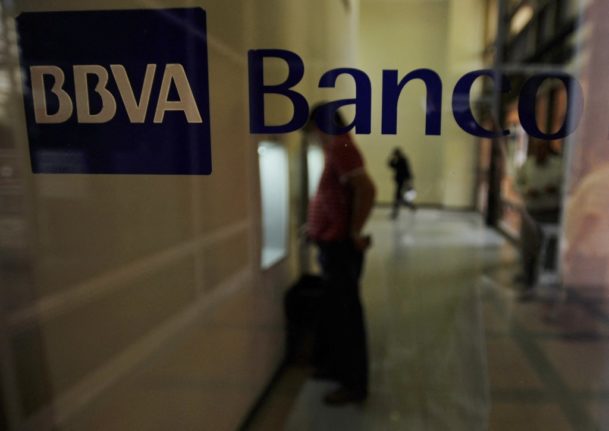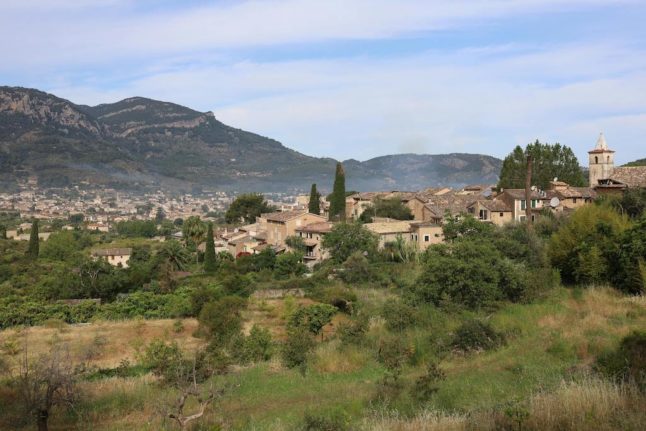With the rise in inflation, the price of daily goods going up and the increase in energy bills, residents in Spain are definitely feeling the squeeze on their wallets.
The cost of the Euribor (the basic rate of interest used in lending between banks in the European Union) has increased too, putting a further strain on people with variable mortgage rates and increasing their monthly payments.
According to the latest data from Spain’s National Statistics Institute (INE), 28.4 percent of homes have a variable rate mortgage and 71.6 percent have a fixed rate.
What has the rise in interest rates meant for variable mortgage rates in Spain?
If for example you have a mortgage of €150,000 for 25 years, the increase in the Euribor could mean that you will be paying an extra €120 per month or an extra €1,400 per year.
READ ALSO: What the Euribor rise means for property buyers and owners in Spain
This is why many people on variable mortgages have been looking into the option of changing it to a fixed plan instead.
What is the difference between a variable and a fixed mortgage?
A variable interest rate mortgage is where the interest charged on the outstanding balance changes based on factors such as the Euribor.
A fixed interest rate loan is a loan where the interest rate on the loan remains the same each month for the amount of time you’ve taken out the mortgage for.
Will variable mortgages keep rising to keep up with the rise in the Euribor?
The increase in the Euribor reached a daily rate of 2.5 percent last week, its highest level since January 2009. This means that if you have a variable mortgage rate, your payments will be subject to change to reflect this. When the interest rate is updated once a year or every six months, the price of your mortgage will go up.
How do I change from a variable rate to a fixed rate mortgage?
According to Miquel Riera from the finance website HelpMyCash.com, there are three different ways to do this in Spain.
The first way is called novación and is a way to modify the conditions of your current mortgage by going to your bank and signing a new agreement, however, it’s up to the bank if they will accept the new proposal and the terms and conditions for doing so.
The second way is what is called a creditor subrogation, which is when you transfer your mortgage from one bank to another one, so that you can modify the price or the terms. This involves contacting many different banks in order to find one that will agree to take on the loan and accept the change in interest rate to a fixed one.
Finally, the last way is to take out a new mortgage at a fixed rate and use the money to pay off your existing variable-interest loan. In this case, you can take out the new mortgage with the same bank or a different one.
According to the housing website Idealista, if you’re going to change banks and find better conditions, it’s best to hire a mortgage broker, so you can get a broad perspective of the different loans available, as well as the various banks that offer them.
How much will it cost me?
This entirely depends on what type of agreement you organise with your bank, but according to Riera, if you switch to a fixed rate via one of the first two ways, you may be charged for an additional assessment on your home.
This could cost around €300, but by law, the amount cannot exceed 0.15 percent of the outstanding amount of the mortgage. But, if it’s after the fourth year since you’ve taken out your mortgage, then this extra commission can’t be charged.
If you choose the third option and take out a new mortgage, then your costs will be significantly higher because you will have to pay property tax, possibly fees for taking out a new loan, as well as other associated fees, which could be between 0 and 1 percent of the amount. There are also cancellation fees to pay off your existing mortgage, which could be around €1,000 on average.
So, although contracting a new mortgage may seem like the best idea at first, it can actually be the more expensive option.
Are banks willing to negotiate?
According to the Association of Financial Users (Asufin), this will depend on the type of loan you have, the amount that remains on your mortgage and your personal situation. They also stress that banks are not obliged by law to offer you an alternative.
The president of the Spanish Mortgage Association, Santos González states that “Families are not going to find a lower offer in the market… There is not a strong likelihood that you will be able to make a big negotiation that would ease the rise in costs.”
What are the pros and cons of changing my mortgage?
The main advantage is of course changing to a rate that is more stable, so you know exactly how much you will be paying out every month.
One of the disadvantages is that if Euribor falls again in the future, you will not be able to benefit from the decrease and will have to continue paying the same amount.
Asufin also warns people that the costs of exchanging the mortgage may work out more expensive, so in the end, it will not be advantageous for you to do so.
According to Idealista, it is really only worthwhile changing your mortgage from a variable to a fixed rate in the first half of the life of your mortgage. For example, if you have a 30-year mortgage, it’s advisable to only change it during the first 15 years. This is because the majority of the amount of the loan is paid during this period.



 Please whitelist us to continue reading.
Please whitelist us to continue reading.
Member comments